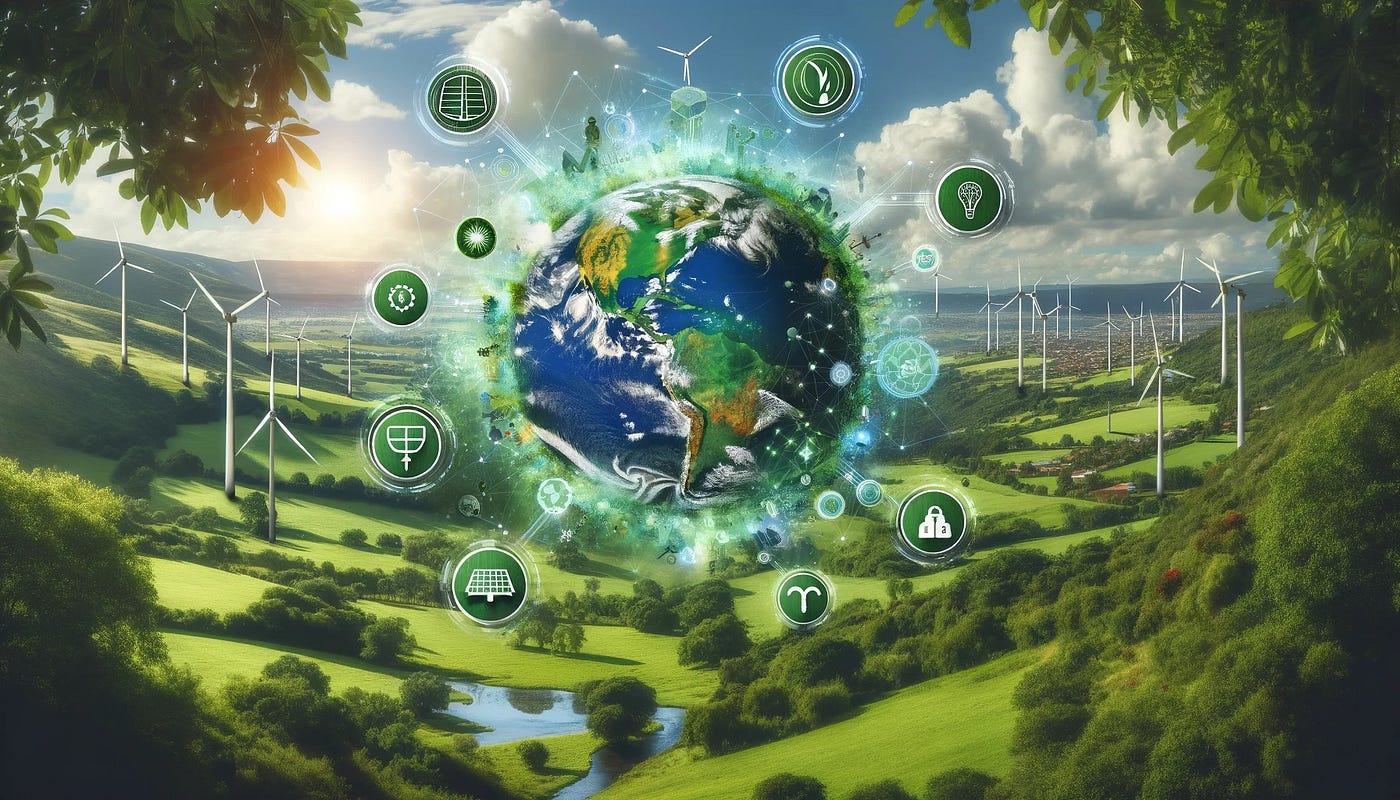Green Technology Trends Transforming the Planet

As the world grapples with the dual challenges of climate change and resource scarcity, green technology is emerging as a beacon of hope. These innovative solutions are transforming industries, reducing environmental footprints, and paving the way for a sustainable future. In this article, we explore the top green technology trends that are reshaping the planet and driving global sustainability efforts.
Renewable Energy Revolution
Renewable energy sources, such as solar, wind, and hydropower, are at the forefront of the green technology movement. Solar panels and wind turbines are becoming more efficient and affordable, enabling broader adoption across the globe. Advances in energy storage, like lithium-ion and solid-state batteries, are also enhancing the reliability of renewable energy systems by addressing the issue of intermittency.
In addition to traditional renewables, emerging technologies like wave and tidal energy are gaining traction. These innovative solutions harness the power of oceans to generate clean energy, offering significant potential to diversify the renewable energy mix.
Electric Vehicles and Sustainable Transportation
The transportation sector is undergoing a massive transformation with the rise of electric vehicles (EVs). Automakers are increasingly investing in EV technology, with many pledging to phase out internal combustion engines in favor of zero-emission alternatives. Advances in battery technology are improving the range and affordability of EVs, making them more accessible to consumers.
Beyond EVs, sustainable transportation trends include the development of hydrogen fuel cell vehicles, electric buses, and shared mobility solutions. These innovations are reducing greenhouse gas emissions and promoting cleaner urban environments.
Green Building and Smart Cities
Green building practices are revolutionizing the construction industry. Energy-efficient designs, sustainable materials, and smart technologies are being integrated into modern buildings to minimize environmental impact. Green roofs, solar panels, and advanced insulation systems are just a few examples of how buildings are becoming more eco-friendly.
Smart cities are also emerging as a key trend in green technology. By leveraging the Internet of Things (IoT), artificial intelligence (AI), and big data, cities can optimize energy use, reduce waste, and improve the quality of life for residents. Innovations like smart grids, intelligent transportation systems, and sustainable water management are central to this transformation.
Circular Economy and Waste Management
The circular economy is redefining how we think about production and consumption. This model focuses on reducing waste, reusing materials, and recycling resources to create a closed-loop system. Companies are adopting circular economy principles to design products that are more durable, repairable, and recyclable.
Advanced waste management technologies are also making a significant impact. Innovations such as automated sorting systems, waste-to-energy plants, and bioplastics are reducing the burden of waste on the environment. These technologies are not only addressing pollution but also creating valuable resources from discarded materials.
Sustainable Agriculture and Food Technology
Agriculture is another sector undergoing a green revolution. Precision farming techniques, powered by AI and IoT, are optimizing resource use and reducing environmental impact. These technologies enable farmers to monitor soil health, track weather patterns, and apply inputs like water and fertilizer more efficiently.
Vertical farming and lab-grown meat are also transforming food production. Vertical farms use significantly less land and water than traditional agriculture, while lab-grown meat offers a sustainable alternative to livestock farming, which is a major contributor to greenhouse gas emissions.
Carbon Capture and Climate Mitigation
Carbon capture and storage (CCS) technologies are playing a critical role in combating climate change. These systems capture carbon dioxide emissions from industrial processes and power plants, preventing them from entering the atmosphere. The captured CO2 can be stored underground or repurposed for use in industrial applications.
Direct air capture (DAC) is another promising technology that removes CO2 directly from the atmosphere. Combined with reforestation and soil carbon sequestration efforts, these technologies are helping to mitigate the effects of climate change and move toward a net-zero future.
The Rise of Green Finance
Green finance is enabling the transition to a sustainable economy by directing investments toward environmentally friendly projects and technologies. Green bonds, carbon markets, and sustainable investment funds are attracting capital for renewable energy projects, conservation efforts, and clean technology startups.
Governments and financial institutions are also incorporating environmental, social, and governance (ESG) criteria into their decision-making processes. This shift is encouraging businesses to adopt more sustainable practices and align their operations with global climate goals.
Conclusion
Green technology is transforming the planet by addressing some of the most pressing environmental challenges of our time. From renewable energy and sustainable transportation to smart cities and circular economies, these innovations are creating a more sustainable and equitable future. As governments, businesses, and individuals embrace green technology, the potential for a cleaner, healthier, and more resilient planet becomes increasingly achievable.



